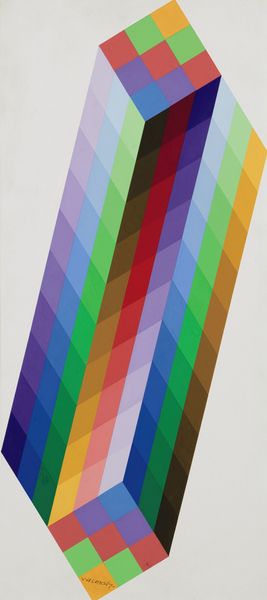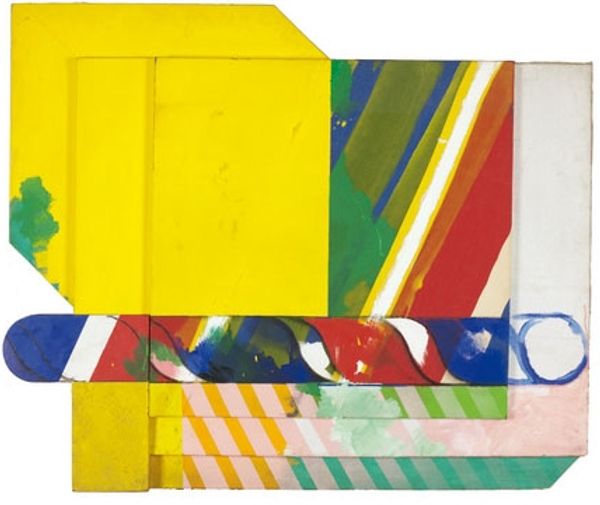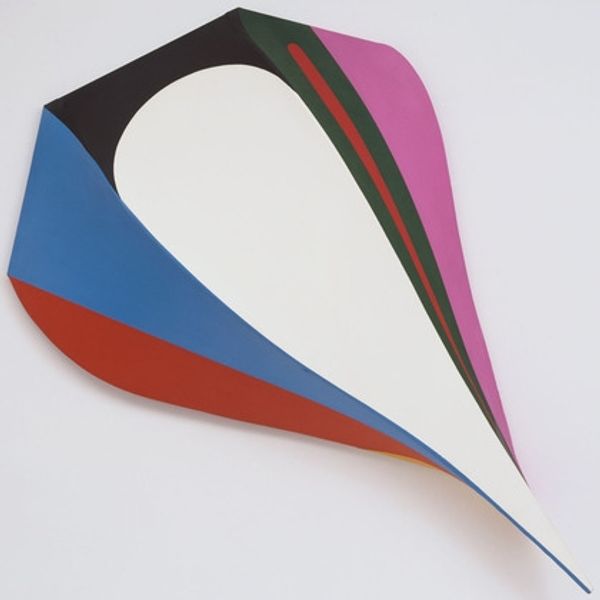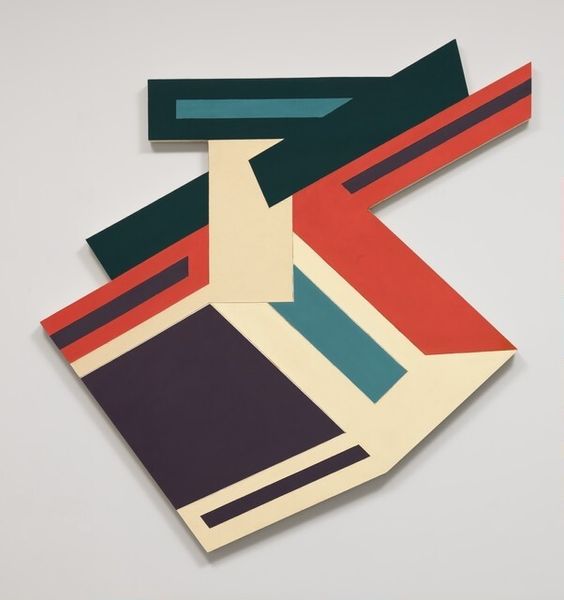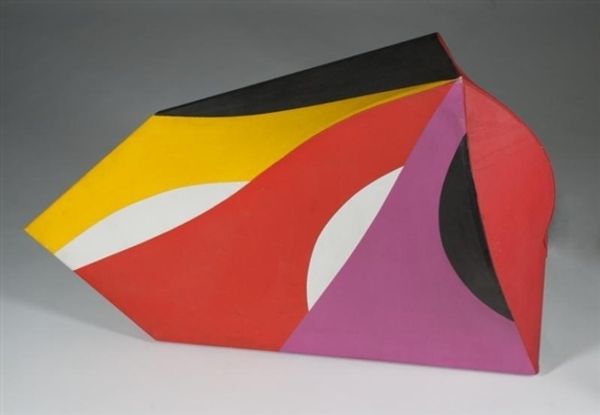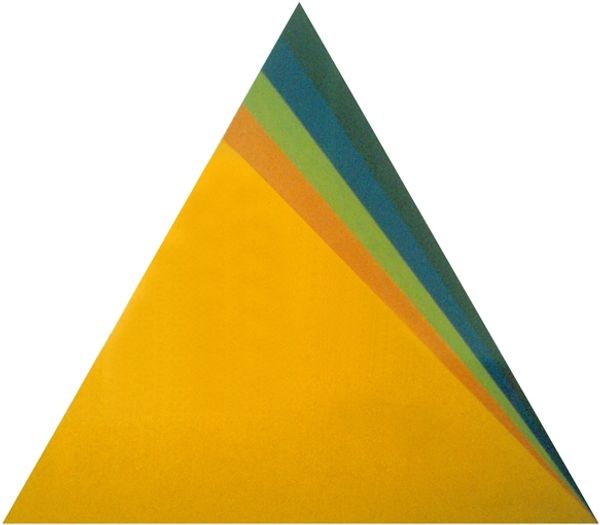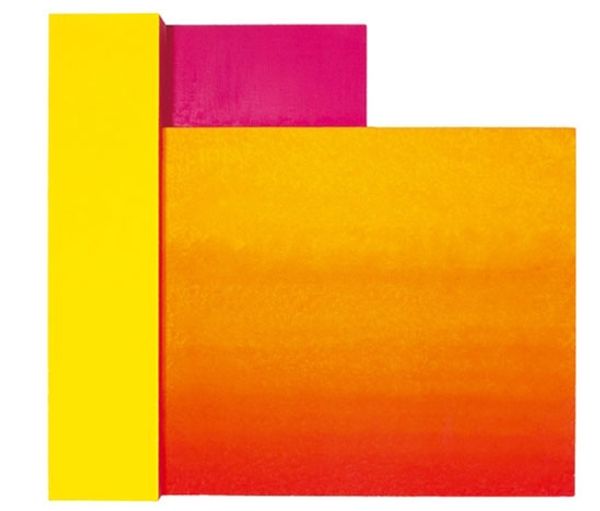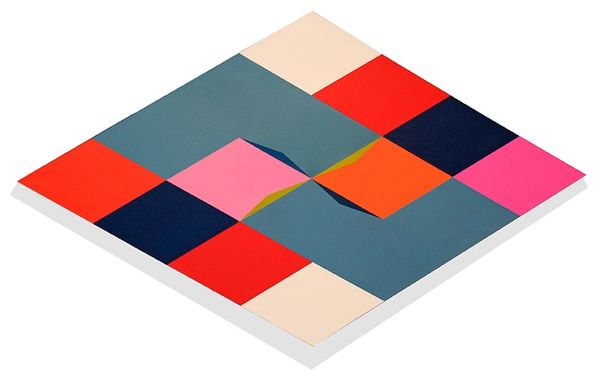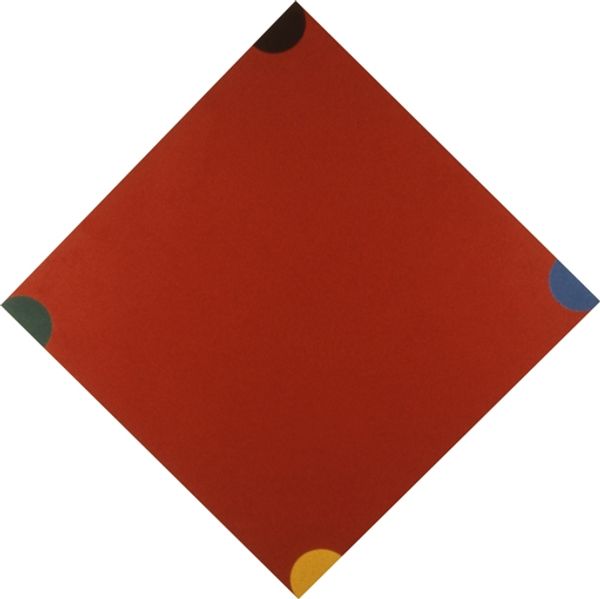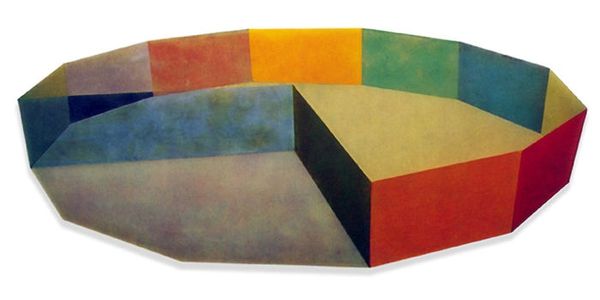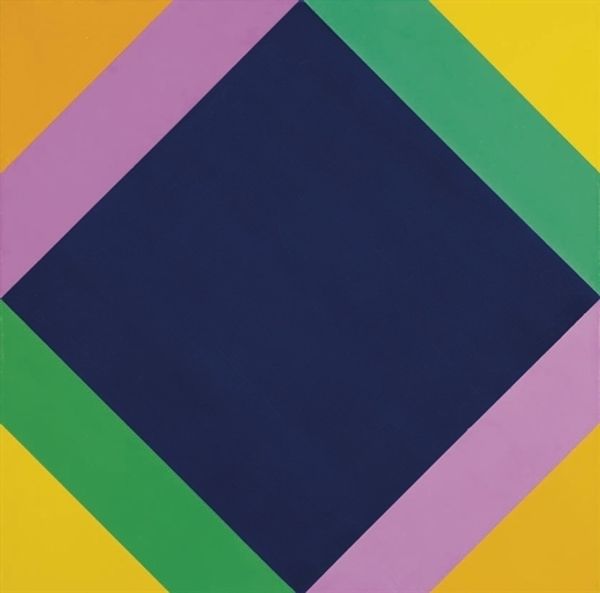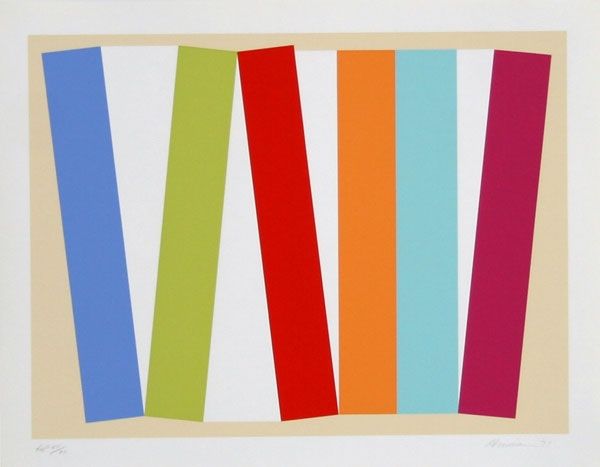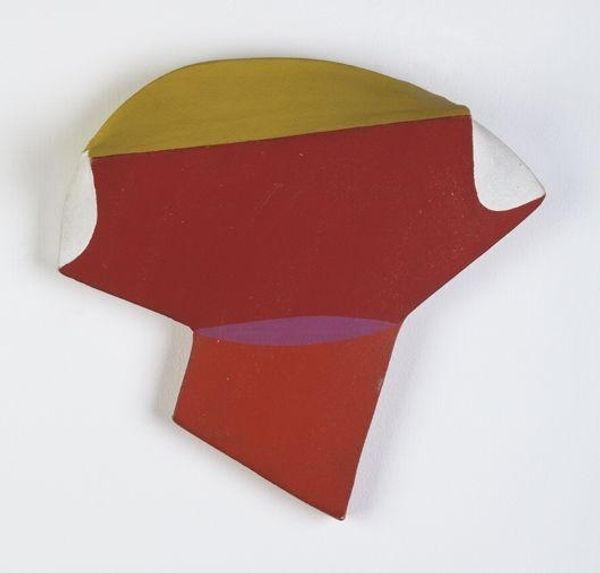
paper
#
op art
#
paper
#
print-effect
#
geometric pattern
#
geometric
#
geometric-abstraction
#
abstraction
#
pop-art
#
hard-edge-painting
Copyright: Charles Hinman,Fair Use
Editor: So, this is Charles Hinman's "Fan Dance" from 1968, made with paper. The bright colours and geometric shapes give it a really playful and almost futuristic feel, kind of like something you'd see in an old sci-fi movie. How do you interpret this work, particularly considering its historical context? Curator: Considering the socio-political landscape of 1968, Hinman’s work resonates within a period of radical social shifts, challenging traditional artistic forms, engaging the public sphere through geometry and color. Given the rise of Pop Art, how does “Fan Dance” participate or diverge from that movement’s dialogue with consumer culture? Editor: That's interesting. I hadn't really considered it beyond its purely aesthetic appeal. It does share that vibrant, almost commercial color palette with Pop Art, but it's also so abstract...almost like hard-edge painting. Curator: Precisely. The ‘60s saw a flattening of cultural hierarchies, reflected in the acceptance of geometric abstraction. Hinman uses art not merely for decoration, but makes geometric forms part of a broader cultural and political shift. Now, looking at the title, “Fan Dance,” does that alter your view of the artwork's public reception in that time? Editor: Definitely. I initially just saw abstract shapes. But now with the title in mind, I can imagine people connecting it to entertainment and spectacle. I’m starting to see how its abstraction reflects the broader culture beyond just an aesthetic statement. Curator: Exactly. Consider the museum and gallery as civic spaces—art engages in politics. This "Fan Dance" wasn’t created in a vacuum; its forms were meant to connect with social dialogue. We also need to understand how a piece like this, created and displayed within specific institutional frameworks, reinforces those very power structures and visual conventions. Editor: I see. It’s not just about the art itself, but also about the entire system around it. I guess I learned to look deeper beyond just surface appeal of colors and shapes. It’s more involved with the socio-political background than what I had originally thought.
Comments
No comments
Be the first to comment and join the conversation on the ultimate creative platform.
